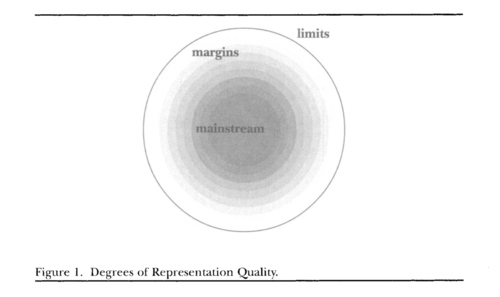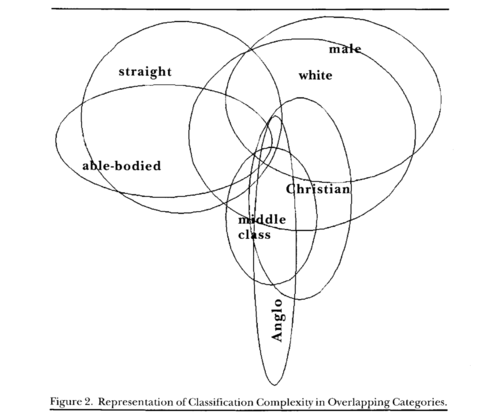User:Simon/spatial classification
File:Olson mapping beyond deweys boundaries.a4.pdf
Hope A Olson's text "Mapping Beyond Dewey's Boundaries" on spatial representations in classification systems brings up several thoughts. Stating that "classifications are locational systems" suggests that spatial representations can be used with various effect; describing, exposing, and when used as metaphors, shifting.
1. Spatial representation of classification systems reveals the ideological conditions that form them. Olson refers to spatial representations of classification systems in the form of diagrams, both a Zipf-based one, and a Venn diagram.
2. The concepts of "paradoxical space" and "rhetorical space". Paradoxical space is described in a similar way to the paranodal; being "both inside and outside, center and margins".
How to utilise a "paradoxical space"? The text seems to suggest focusing on connections, relationships between subjects rather than differences? What could an associative classification system look like?
The space of a page is crucial in the printed format - the text block excludes the margin - clearly delineating what is recognized as authored, and what is not. However, some formats of digital books (e.g. EPUB) do not have the notion of a page. There is the space of the screen, but this is mutable, whereas a printed page is not.
universality
It doesn't seem that all formats of classification schemes should be merge all formats or classification schemes into one - this is in itself a classification of classification.


